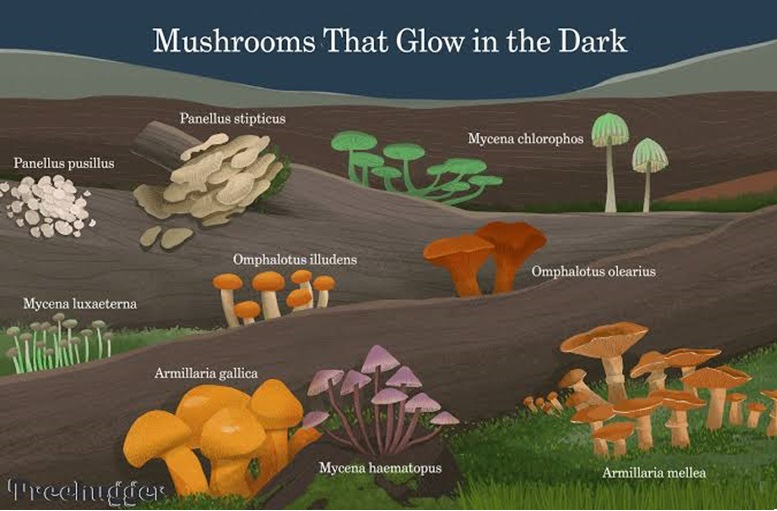BIOLUMINESCENT MUSHROOM DISCOVERY IN KANYAKUMARI WILDLIFE SANCTUARY
Why in News:
- A team of researchers and the forest department have made an extraordinary discovery in the Kanyakumari Wildlife Sanctuary (KKWLS).
- The researchers have spotted a rare bioluminescent mushroom known as ‘Mycena chlorophos’ within a specific area of the wildlife sanctuary.
Source: Treehugger
Bioluminescence and Its Origin:
- Bioluminescence is the fascinating ability of living organisms to emit light.
- This natural phenomenon occurs when light-emitting molecules called luciferins react with oxygen in the presence of an enzyme called luciferase.
- The result is the emission of light without heat, creating a mesmerising glow.
- Its purpose varies; fireflies use it for mating and communication, while deep-sea animals utilize it for camouflage or luring prey.
- This natural phenomenon is a remarkable display of nature’s wonders.
Distinct characteristics
- The mushroom exhibits distinct characteristics, featuring a pristine white disc with a shallow depression at its center and emitting a vibrant, greenish glow in the darkness.
Significance of Bioluminescent Fungi:
- Bioluminescent fungi serve a crucial ecological role by attracting insects, aiding in the dispersal of their spores.
- The world hosts approximately 103 species of bioluminescent fungi, with India being home to seven of these captivating species.
- These mushrooms are a testament to the intriguing diversity of life on our planet.
The unearthing of this bioluminescent mushroom in the Kanyakumari Wildlife Sanctuary sheds light on the incredible biodiversity of our planet and the urgent need to protect such invaluable natural treasures. It serves as a testament to the wonders of the natural world and the importance of preserving our fragile environment.




